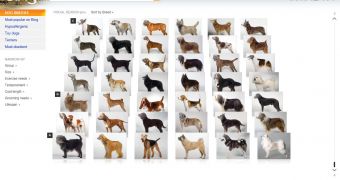While owning the lion’s share of the search engine market, Google has yet to introduce an innovative feature at the same level with Microsoft’s Bing Visual Search. Available in beta development stage since September 14th, 2009, Visual Search allows end users, as the moniker implies, to transform a search from test to images. In all fairness, Bing can’t be credited with all the merits, as Microsoft’s Silverlight technology also plays an important role in delivering the full experience of Visual Search.
“Visual Search is a new way to formulate and refine your search queries through imagery, particularly for sets of results that tend to be more structured. We call these data groupings galleries. Simply go to www.bing.com/visualsearch and install Silverlight if you don’t have it already. What you’ll see is an amazing new visual search experience. Visual Search allows you to quickly scroll through the galleries or do a one-click refinement using the quick tabs on the left, which are specifically relevant to the type of results you are browsing through,” revealed Todd Schwartz, Bing.
Obviously, Bing Visual Search is more suited to certain types of searches. Hunting down for a dog breed, or a D-list celebrity, for NFL teams and players and even Yoga poses are indeed simplified tasks. And indeed, a search engine should also be able to help its users find what they’re looking for even if they don’t know what it is. The image thumbnails offered by Visual Search manage to compensate for the information users might be lacking. Still, Visual Search is currently limited to a small number of possible queries, it is a Beta, after all. And for queries in which users know exactly what they’re looking for, the good old, plain vanilla text-based search is the way to go.
“How many times have you seen a movie trailer and forgotten the name of it the next day? You go online to search for it but you can’t seem to find the movie with ‘what’s-his-name’ in it anywhere but you can picture the actor in your head. A study conducted by Microsoft Research shows that consumers can process results with images 20% faster than text only results. So it’s clear that images play a big part in helping consumer’s with a variety of search activities,” Schwartz added.

 14 DAY TRIAL //
14 DAY TRIAL //